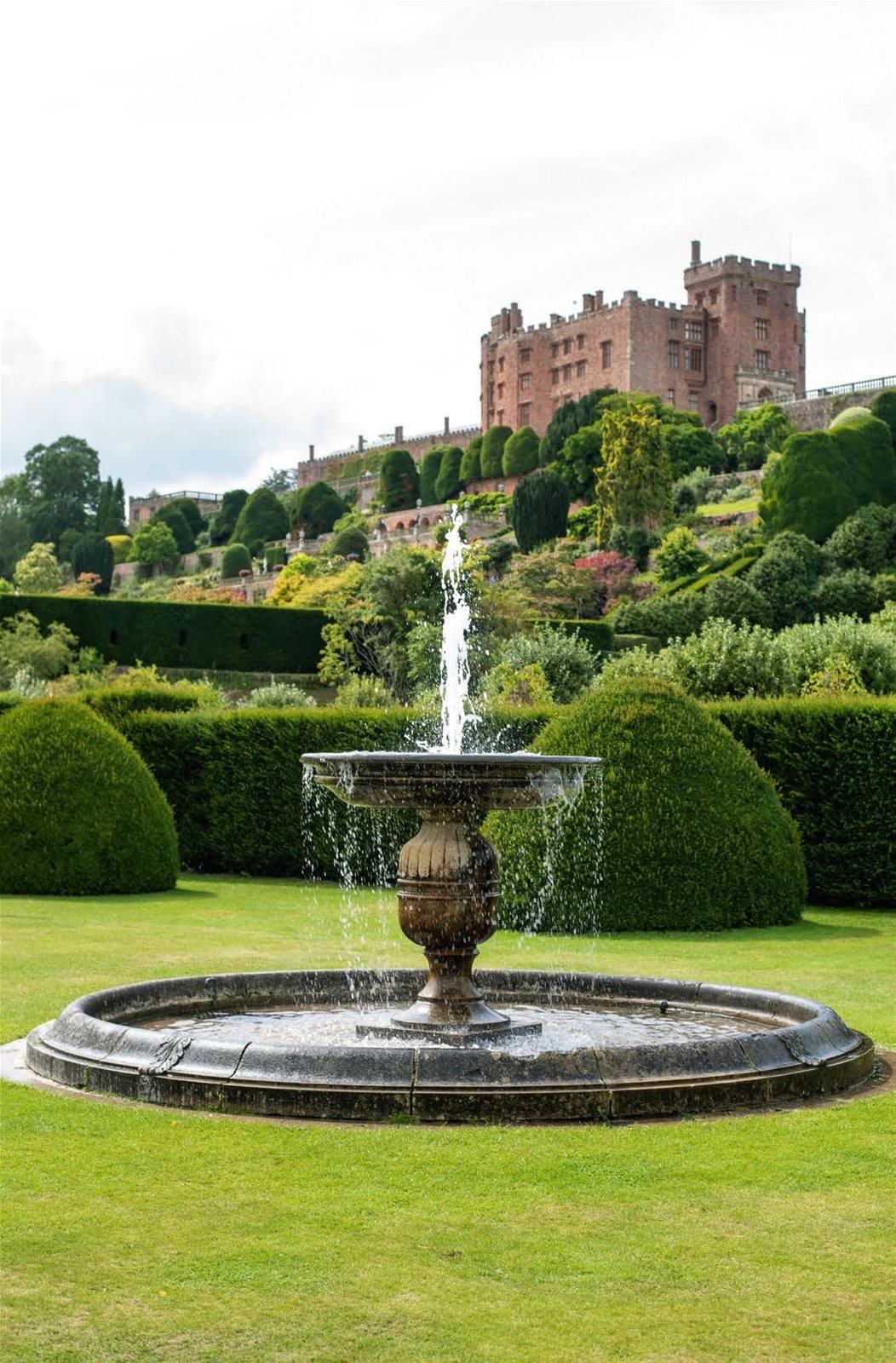
served at The Checkers in Montgomery fountain in the terraced gardens of Powis Castle
Deriving its name from a Middle English word meaning ‘borderland’, the Welsh Marches’ identity has been moulded by the fact that it straddles both England and Wales. Loosely described as the area surrounding the 177-mile Offa’s Dyke — a centuries-old path tracing the boundary between the two countries — those who visit today discover an eclectic spirit and thriving rural communities. One of the UK’s lesser-known pockets, it incorporates parts of Shropshire and Herefordshire, plus Powys, Monmouthshire and Wrexham.
The neighbours’ age-old disputes have left a striking architectural legacy in the Welsh Marches: Britain’s highest concentration of motte-and-bailey castles can be found here, presiding over a patchwork of rolling farmland, heather-clad hills and valleys pinned with medieval market towns. Artists, musicians and freethinkers have long sought inspiration from this landscape and, in turn, independent shops, cafes and creative spaces have sprouted and flourished. Rest assured, it’s still a rich seam of storied rambles and cosy, fireside pints.
From a Cosmic Egg to a Devil’s Chair
The Andrew Logan Museum of Sculpture is a kaleidoscope of colour and glitz in the Welsh village of Berriew, now his home. Europe’s first museum dedicated to a living artist, it showcases one-of-a-kind works like the giant polystyrene, resin and glass Cosmic Egg, as well as memorabilia from Logan’s Alternative Miss World events, founded in 1972 and since attended by creative luminaries including Vivienne Westwood. andrewloganmuseum.org